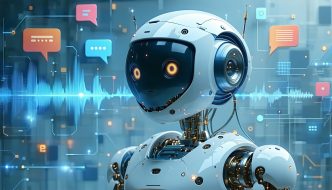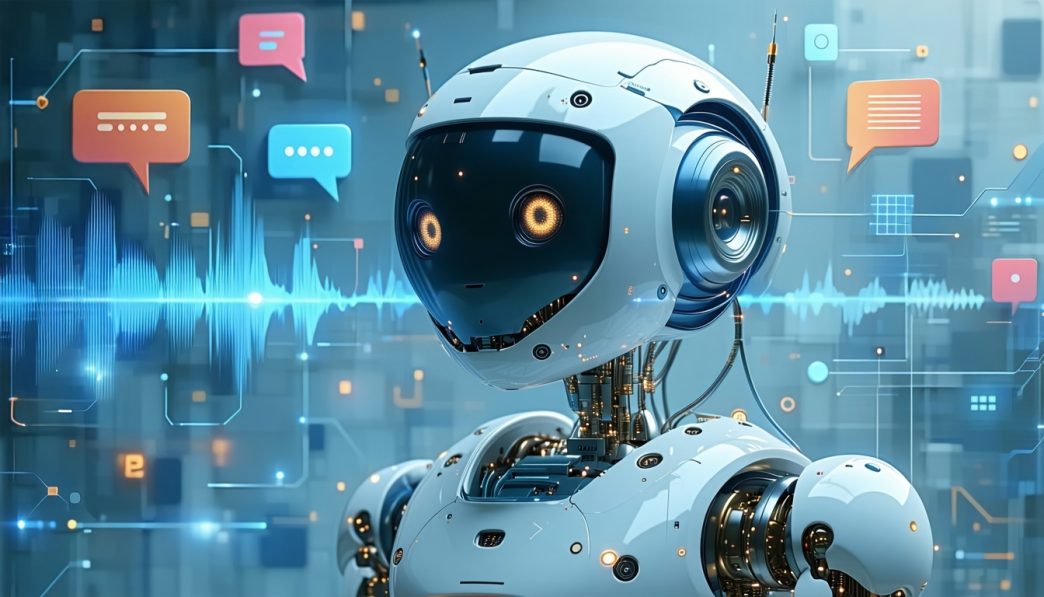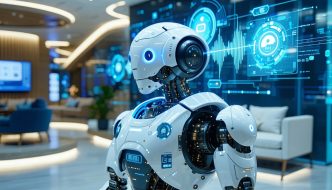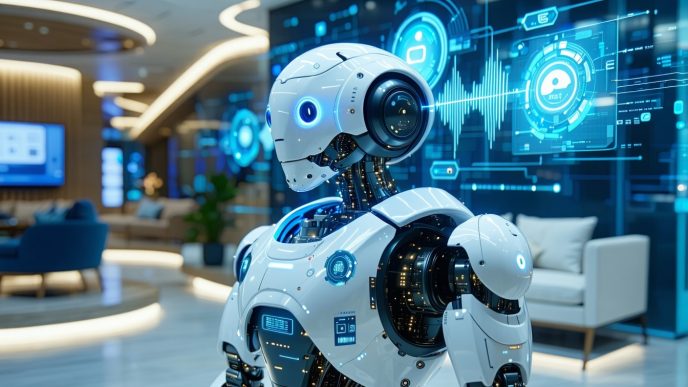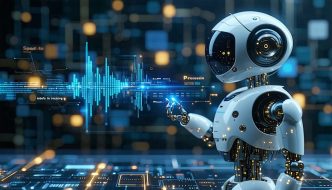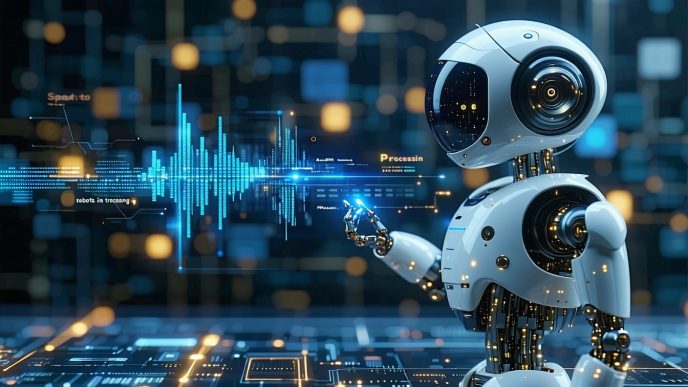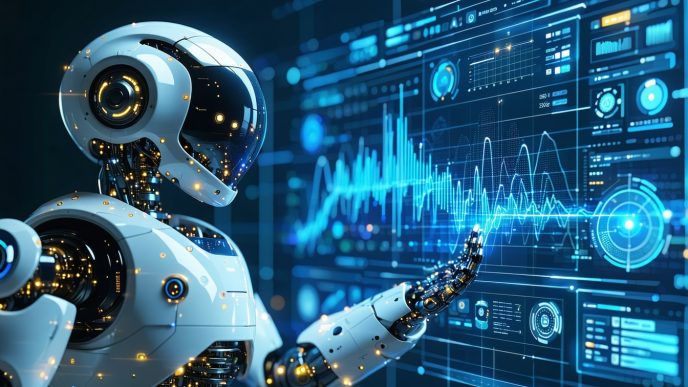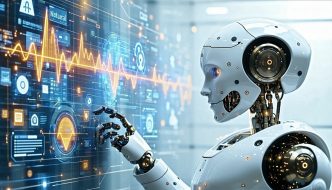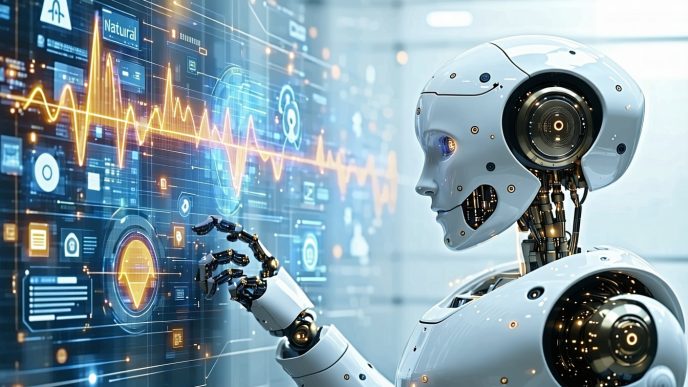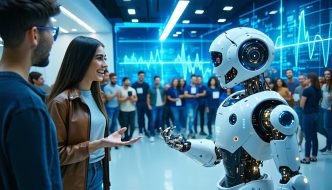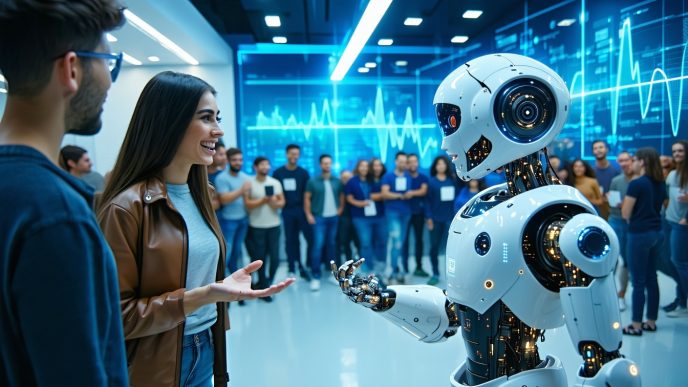Voice Recognition Technology in Robotics
Voice recognition technology plays a pivotal role in enabling robots to interact with humans using natural language. It combines various fields, including audio processing, linguistics, and artificial intelligence, to facilitate seamless communication between robots and users.
Evolution of Voice Recognition in Robotics
The journey of voice recognition in robotics has seen significant advancements over the years. Initially, voice recognition systems were limited, often requiring specific commands or training to understand a limited vocabulary. Early systems relied heavily on basic audio input and simplistic algorithms.
With technological advancements, the evolution of voice recognition technology has led to more sophisticated systems capable of processing a broader range of human speech. Machine learning algorithms now enable robots to improve their accuracy over time by analyzing user interactions. The following table illustrates key milestones in the evolution of robot voice recognition technology:
| Year | Milestone | Description |
|---|---|---|
| 1950s | First Voice Recognition Systems | Introduction of early systems that could recognize isolated words. |
| 1980s | Continuous Speech Recognition | Development of systems that allowed recognition of continuous speech, though still limited. |
| 2000s | Machine Learning Integration | Use of machine learning allowed for better accuracy and vocabulary expansion. |
| 2010s | Deep Learning Models | Introduction of neural networks provided significant improvements in understanding natural language. |
Importance of Natural Language Processing (NLP) in Robotics
Natural Language Processing (NLP) is integral to enhancing robot voice recognition systems. NLP enables robots to comprehend and interpret human language in a way that is meaningful and contextually appropriate. This is essential for robots to understand commands and engage in more natural conversations.
NLP involves several components:
-
Syntax and Grammar Processing: Robots analyze sentence structure to understand the grammatical relationships between words. This helps in accurately processing commands.
-
Semantic Understanding: Robots utilize context and meaning behind the words for better interpretation. This allows for more relevant responses based on user interactions.
The advancements in NLP not only improve the ability of robots to follow commands but also contribute to conversation capabilities in robots. As robots become better at understanding human language, they can provide more accurate responses, thereby enhancing user experience.
The integration of NLP with voice recognition technology is crucial for the future of robot communication. Such advancements will enable robots to interact in more human-like ways, making them valuable companions in both daily tasks and complex scenarios. For insights into how these technologies are being developed, refer to our articles on robot voice interfaces vs apps and training robots to understand accents.
How Robots Interpret Human Speech
Robots employ sophisticated technologies to comprehend human speech, primarily through voice recognition systems and natural language processing (NLP). This process consists of two critical stages: speech-to-text conversion and natural language understanding.
Speech-to-Text Conversion Process
The initial step in robot voice recognition involves converting spoken language into text. This is achieved through a technology known as speech-to-text processing. The process typically involves several stages:
- Audio Input: Microphones capture the voice command.
- Acoustic Processing: The captured audio is analyzed for phonemes, the smallest units of sound in speech.
- Feature Extraction: The system extracts relevant features from the audio, which helps differentiate between various sounds and words.
- Decoding: Advanced algorithms match these sound patterns to their corresponding text representations using large datasets.
This conversion is crucial for robots to understand what is being said before they can act upon the information. For more details on how this process works in robotics, refer to our article on speech to text processing in robots.
| Stage | Description |
|---|---|
| Audio Input | Capturing voice commands through microphones |
| Acoustic Processing | Analyzing sound patterns |
| Feature Extraction | Identifying key audio features |
| Decoding | Matching sounds to text using algorithms |
Natural Language Understanding in Robots
After the speech has been converted to text, the next step involves natural language understanding (NLU). This process enables robots to interpret the meaning behind the text. NLU includes two primary components:
- Syntax and Grammar Processing: Robots analyze the structure of sentences to understand how different words relate to one another. This helps in deciphering complex commands and questions.
- Semantic Understanding: Robots extract the intended meaning from the text. This involves recognizing context, nuances, and even emotional undertones behind commands.
Successful NLU allows robots to respond accurately to queries, carry on conversations, and execute tasks effectively. To learn more about how robots interpret language, see our article on natural language understanding in robots.
| Component | Description |
|---|---|
| Syntax and Grammar | Analyzing sentence structure |
| Semantic Understanding | Extracting meaning and context |
The integration of voice recognition and NLP technologies is essential for effective interaction between humans and robots. Progress in these fields continues to enhance how robots comprehend and respond to voice commands. For insights into the accuracy of voice commands in robots, check our article on voice command accuracy in robots and explore further into conversational capabilities with our piece on conversation capabilities in robots.
Key Components of Robot Voice Recognition
Understanding how robots recognize and respond to human speech involves exploring the essential technologies that enable this process. Two of the core components in robot voice recognition and natural language processing (NLP) are microphones and audio sensors, along with sophisticated signal processing algorithms.
Microphones and Audio Sensors
Microphones and audio sensors are critical in capturing sound waves and converting them into electrical signals that robots can process. They detect voice commands, environmental sounds, and other audio cues that contribute to a robot’s interaction with its surroundings.
| Type of Microphone | Sensitivity (dB) | Frequency Range (Hz) |
|---|---|---|
| Condenser Microphone | 20–30 | 20–20,000 |
| Dynamic Microphone | 60–70 | 20–18,000 |
| MEMS Microphone | 30–40 | 100–15,000 |
Condenser microphones are often preferred in robotic applications due to their high sensitivity and wide frequency range. They capture a greater variety of sounds, making them suitable for understanding variations in human speech. Conversely, dynamic microphones, while less sensitive, can be more durable in various environments. Microelectromechanical systems (MEMS) microphones are compact and often integrated into smaller robotic designs due to their miniaturized size.
Signal Processing Algorithms
Once audio signals are captured, signal processing algorithms play a crucial role in analyzing and interpreting these sounds. The algorithms convert audio signals into a format that robots can understand, a key step in the speech-to-text processing in robots.
Commonly utilized algorithms include:
- Fourier Transform: Translates time-domain signals into frequency-domain representations to analyze speech characteristics.
- Noise Reduction Techniques: Eliminates background noise to improve the clarity of voice commands.
- Feature Extraction: Identifies essential features of the audio signal, such as pitch and tone, aiding in interpretation.
| Algorithm | Functionality |
|---|---|
| Fourier Transform | Converts signals for frequency analysis |
| Noise Reduction | Enhances voice clarity by suppressing unwanted sounds |
| Mel-Frequency Cepstral Coefficients (MFCC) | Represents short-term power spectrum of sound |
The processing algorithms enable robots to distinguish between different aspects of speech and improve the overall voice command accuracy in robots. Efficient signal processing contributes to betterNLP, ensuring that robots can respond appropriately to commands and engage in more natural conversations.
By integrating high-quality microphones with advanced signal processing techniques, robots can effectively understand and interact with human users, paving the way for more intuitive and responsive robotic systems. For further exploration, articles on robot responses and personality design and future of voice interaction with robots provide additional insights into the advancements in this field.
Implementing Natural Language Processing (NLP)
Understanding how robots process and interpret human speech requires a deep dive into natural language processing (NLP). This technology is vital for achieving effective communication between humans and robots.
Syntax and Grammar Processing
Syntax and grammar processing involves analyzing the structure of sentences to understand the relationships between words. Robots must recognize sentence patterns and grammatical rules to correctly interpret commands and queries. This analysis often utilizes language models, which help in predicting how words fit together in a given context.
Robots use algorithms to identify parts of speech, such as nouns, verbs, and adjectives. This allows them to parse sentences accurately and grasp the intended meaning behind user commands. For instance, a command like “Turn off the living room lights” requires syntax analysis to differentiate the action (turn off) from the objects involved (lights).
| Grammar Elements | Description |
|---|---|
| Nouns | Identifies subjects or objects. |
| Verbs | Indicates actions or states. |
| Adjectives | Describes characteristics of nouns. |
| Adverbs | Modifies verbs, adjectives, or other adverbs. |
Successful syntax processing is crucial for voice command accuracy in robots. When robots can comprehend sentence structure, they can respond more effectively to user requests.
Semantic Understanding in Robots
Semantic understanding goes beyond syntax and grammar to analyze the meanings of words and phrases. This aspect of NLP is essential for robots to interpret context and intent accurately. By employing various techniques, such as semantic parsing and entity recognition, robots can discern the underlying message.
For example, the phrase “I want a cup of coffee” may have different meanings depending on the context in which it is used. Semantic understanding enables robots to grasp nuances and respond appropriately. They can recognize specific entities (like “coffee”) and relate them to actions (like “want”).
Robots often employ machine learning models to enhance their semantic capabilities. These models are trained on vast datasets containing various conversational examples, helping robots learn how to interpret different expressions and phrases.
| Semantic Techniques | Description |
|---|---|
| Named Entity Recognition | Identifies proper nouns (people, places, organizations). |
| Sentiment Analysis | Assesses the emotional tone of the text. |
| Contextual Awareness | Understands the broader situation surrounding a command. |
This semantic processing is vital for creating conversation capabilities in robots that feel natural and engaging. Effective semantic understanding significantly enhances a robot’s ability to respond and interact with users seamlessly.
As NLP technology continues to evolve, the sophistication of robot voice recognition and NLP will advance, improving interactions for users in everyday scenarios. Understanding these components is critical for those interested in the future of voice interaction with robots.
Challenges in Robot Voice Recognition
Despite advancements in robotics and voice recognition technology, several challenges remain in effectively interpreting human speech. This section will explore two significant hurdles: background noise rejection and accents and dialects recognition.
Background Noise Rejection
Background noise poses a significant obstacle for robots attempting to understand voice commands. Robots must accurately distinguish between the primary voice signals and various ambient sounds, such as conversations, music, or traffic. Effective noise cancellation algorithms are essential for improving clarity and ensuring accurate understanding of commands.
The ability of robots to filter out noise can be quantified by the Signal-to-Noise Ratio (SNR), a measure of signal strength relative to background noise. An optimal SNR indicates that the robot can focus on the user’s voice amid distractions. The following table illustrates common SNR levels related to voice recognition effectiveness:
| SNR Level (dB) | Description | Voice Recognition Accuracy (%) |
|---|---|---|
| > 20 | Ideal conditions with minimal background noise | 95 – 100 |
| 10 – 20 | Moderate noise interference | 70 – 90 |
| < 10 | High background noise levels | 50 – 70 |
Improving background noise rejection enhances the overall performance of robot voice recognition systems, allowing for improved voice command accuracy in robots.
Accents and Dialects Recognition
The diversity of human speech, including accents and dialects, presents a complex challenge for robots. Voice recognition systems often excel in understanding standard dialects but may struggle with regional pronunciation differences. This limitation can hinder effective interaction and user satisfaction, especially in multicultural settings.
Training systems to accurately recognize various accents requires extensive data collection and machine learning techniques. By utilizing diverse language datasets, developers aim to improve robots’ ability to understand speech variations. The following table outlines important aspects of accent recognition training:
| Training Aspect | Description | Impact on Recognition |
|---|---|---|
| Dataset Diversity | Use of varied speech samples from different regions | Enhances adaptability to accents |
| Machine Learning Techniques | Algorithms that learn from speech patterns | Increases accuracy over time |
| Continuous Learning | Regular updates to datasets and training methods | Maintains relevance to evolving speech |
Through targeted training on accents and dialects, robots can develop better conversation capabilities in robots, leading to more natural interactions with users.
These challenges underscore the importance of ongoing research and development in the field of robot voice recognition and NLP. Addressing these issues will ensure that future robots are equipped to understand and respond effectively to diverse human speech patterns, further enhancing their utility in daily life.
Future of Voice Recognition and NLP in Robotics
The future of robot voice recognition and natural language processing (NLP) is promising, featuring continual advancements that enhance how robots understand and interact with humans. This evolution is significantly driven by improvements in artificial intelligence (AI) and machine learning technologies, as well as the growing integration of these functions into everyday devices like virtual assistants and smart home systems.
Advancements in AI and Machine Learning
AI and machine learning are at the core of the improvements seen in robot voice recognition and NLP. These advancements allow robots to learn from interactions and refine their understanding over time. Some key developments include:
| Enhancement | Description |
|---|---|
| Improved Algorithms | More sophisticated algorithms enable better prediction of user intent, resulting in quicker and more accurate responses. |
| Deep Learning Techniques | Utilizing neural networks enhances the robot’s ability to process and understand complex language patterns, improving conversation capabilities. |
| Data Collection and Training | Robots now benefit from vast amounts of data, leading to continuous learning and adaptation to new phrases, commands, and contexts. |
As robots become more proficient in understanding and responding, they will be able to engage in more natural and fluid conversations. This can be observed in applications related to speech to text processing in robots and natural language understanding in robots.
Integration with Virtual Assistants and Smart Home Devices
The integration of voice recognition and NLP in robotics includes collaboration with established virtual assistants like Siri, Alexa, and Google Assistant. This synergy between robotic systems and virtual assistants enhances user experience and functionality within smart home ecosystems. Key aspects include:
| Feature | Description |
|---|---|
| Smart Home Control | Robots are capable of managing various tasks within a smart home environment, such as adjusting lights, thermostats, and security systems based on voice commands. |
| Personalized Interactions | Integration allows robots to learn individual user preferences, enhancing the conversation capabilities in robots and providing tailored responses. |
| Unified Interfaces | The compatibility of robots with existing virtual assistants simplifies user interaction, making it easier to control multiple devices through a single interface. |
This evolution reflects the trend toward more integrated and user-friendly technology, allowing robots to perform actions and provide responses similar to applications within the realm of robot voice interfaces vs apps.
As technology advances, the integration of voice recognition and NLP in robotics will enable even more dynamic and effective human-robot interactions. The focus will continue to expand on enhancing robot responses, including design elements of robot responses and personality design for connecting better with users. Furthermore, ongoing efforts will address the challenge of training robots to understand accents, ensuring broad accessibility for all users.
The trajectory points toward an increasingly seamless interaction between humans and robots, enhancing the overall experience of the future of voice interaction with robots.
Privacy and Security Considerations
As robotics technology advances, particularly in the area of voice recognition and natural language processing (NLP), privacy and security have become major concerns. Understanding how personal data is handled in these systems is essential to ensuring trust among users.
Data Protection and Privacy Concerns
When robots process voice commands or other verbal interactions, they often rely on cloud-based services for voice recognition and NLP. This means that personal voice data may be transmitted to remote servers for analysis, raising questions about data protection and the potential for misuse. Key concerns include:
- Data Storage: Where and how long is the voice data stored?
- Data Usage: How is the data used beyond immediate processing?
- User Consent: Are users fully informed about data collection practices?
The level of concern about privacy can vary. Table 1 summarizes the common privacy concerns associated with robot voice recognition and NLP.
| Privacy Concern | Description |
|---|---|
| Data Breaches | Unauthorized access to stored voice data. |
| Misuse of Data | Use of data for purposes not agreed upon by the user. |
| Lack of Transparency | Insufficient information about data handling practices. |
| User Autonomy | Inability for users to control their data. |
Addressing these concerns is crucial for building confidence in robotic systems, which often rely on voice-driven interactions.
Safeguards in Place for Secure Voice Interaction
To protect user data and ensure secure voice interactions, several safeguards have been implemented in the design of robotic systems. These include:
- Data Encryption: Voice data is often encrypted during transmission to prevent unauthorized access.
- Anonymization: Stripping identifying information from voice data helps to protect user identities.
- User Control Options: Many systems allow users to manage their data, offering options for data deletion and storage preferences.
- Regular Security Audits: Continuous monitoring and testing of systems contribute to identifying vulnerabilities.
Table 2 illustrates different security measures used in robot voice recognition systems.
| Security Measure | Purpose |
|---|---|
| Encryption | Protects data during transmission. |
| Anonymization | Reduces privacy risks by detaching identity from data. |
| User Control Features | Empowers users to manage their data actively. |
| Security Audits | Identifies and resolves potential vulnerabilities. |
By implementing these security measures, developers aim to foster trust and encourage the adoption of voice recognition technologies in robots. Users who are aware of privacy and security practices are more likely to use these advancing technologies effectively. For more insights into how robots comprehend language, explore our articles on natural language understanding in robots and voice command accuracy in robots.

